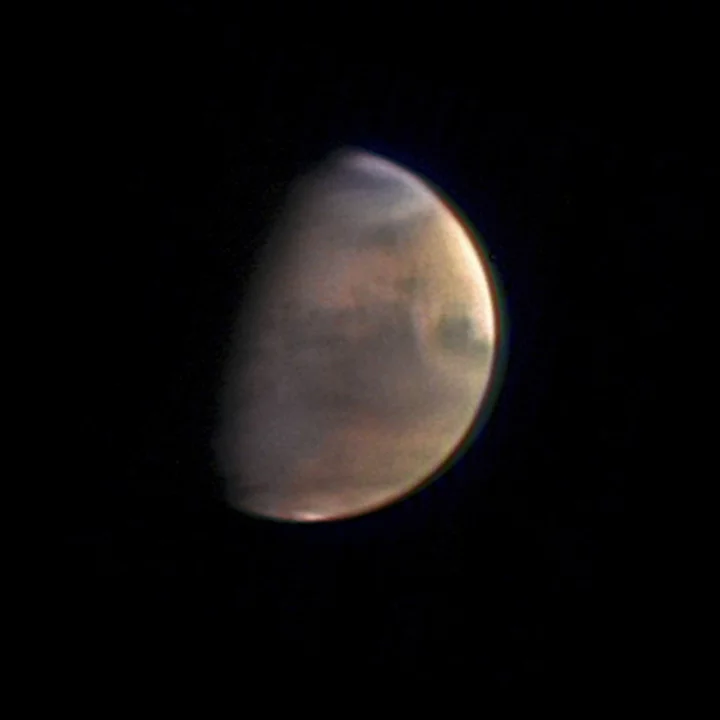Some space events happen too slowly to see, but a new time-lapse video provides a rare glimpse of an exoplanet plodding through its vast, decades-long journey around a star.
Northwestern University astrophysicist Jason Wang has done just that, squishing 17 years of real telescope images of a gas giant planet not too distant from Earth into a 10-second video. As its name suggests, Beta Pictoris b, a planet 12 times Jupiter's mass, is in the Pictor constellation at just over 63 light-years away.
The video only captures 75 percent of the planet's entire orbit, but it is believed to be the longest time-lapse of an exoplanet ever made.
“We need another six years of data before we can see one whole orbit,” Wang said in a statement. “We’re almost there. Patience is key."
SEE ALSO: Watch these distant planets orbit their star in spectacular time-lapseMany exoplanets — as in planets that orbit stars other than the sun — are often discovered by watching them cross in front of their distant stars to prove they exist. NASA has so far identified about 5,500 exoplanets, though experts estimate there could be over a trillion lurking in the Milky Way alone.
This distant world is special because its size and brightness have made it easier to spot than other exoplanets over the years. Gemini Observatory and two at the European Southern Observatory have snapped pictures of it since 2003, according to Northwestern.
To make the video, Wang used "adaptive optics" to fix blurring caused by Earth’s atmosphere and other technology to hide the glare of the host star. This is why the video blacks out the actual star and places a star symbol on top of where it should be. The star still manages to outshine the world when the planet gets too close. For those phases, Wang marked Beta Pictoris b with an X to make it easier for viewers to follow its path when it seems to vanish.
Want more science and tech news delivered straight to your inbox? Sign up for Mashable's Light Speed newsletter today.
Wang, an expert in exoplanet imaging, says the video doesn't reveal any new scientific findings. But it does bring the subject of planetary orbits to life for the public. Several months ago, Mashable covered Wang's time-lapse video of four exoplanets dancing around their host star over a 12-year period.
"A lot of times, in science, we use abstract ideas or mathematical equations,” he said. “But something like a movie — that you can see with your own eyes — gives a visceral kind of appreciation for physics that you wouldn’t gain from just looking at plots on a graph.”
A direct infrared image of the environment around Beta Pictoris. Credit: ESO / A.-M. Lagrange et al.In the video above, the exoplanet appears to pierce through its star, Beta Pictoris, though it's actually traveling around it on a tilted orbit. The star is nearly nine times brighter than the sun, even though it's less than double its mass. It's also young by star standards at 20 to 26 million years old. The sun by comparison is about 4.6 billion years old.
For an idea of why the planet's orbit takes so long, it is about 10 times farther from Beta Pictoris than Earth is from the sun. But it's an exceptional target to observe, Wang said. It's almost the size of a brown dwarf, which astronomers consider a failed star not massive enough to generate its own nuclear power.
"It’s extremely bright,” he said. That’s why it’s one of the first exoplanets to ever be discovered and directly imaged. It’s so big that it’s at the boundary of a planet and a brown dwarf, which are more massive than planets.”









